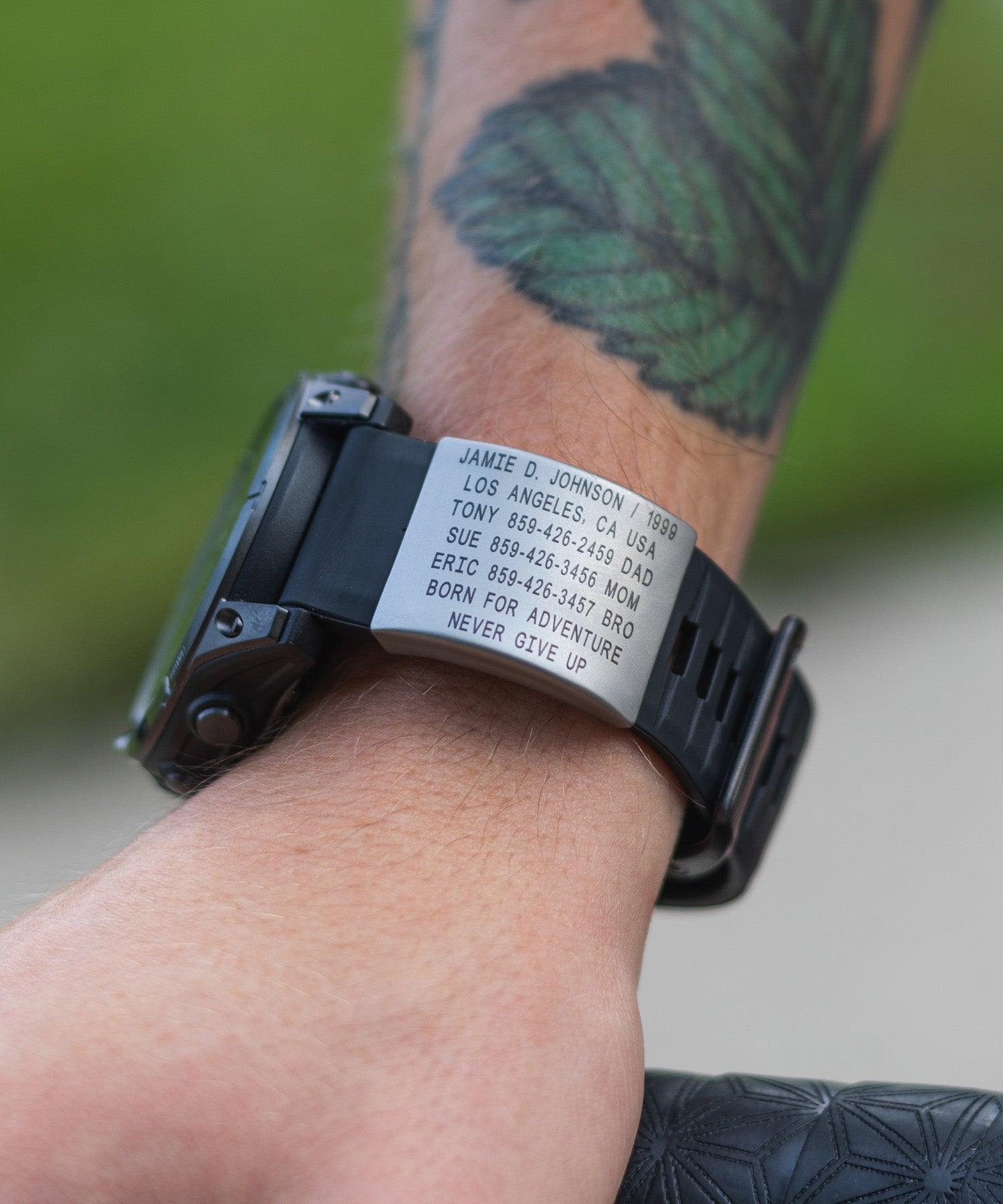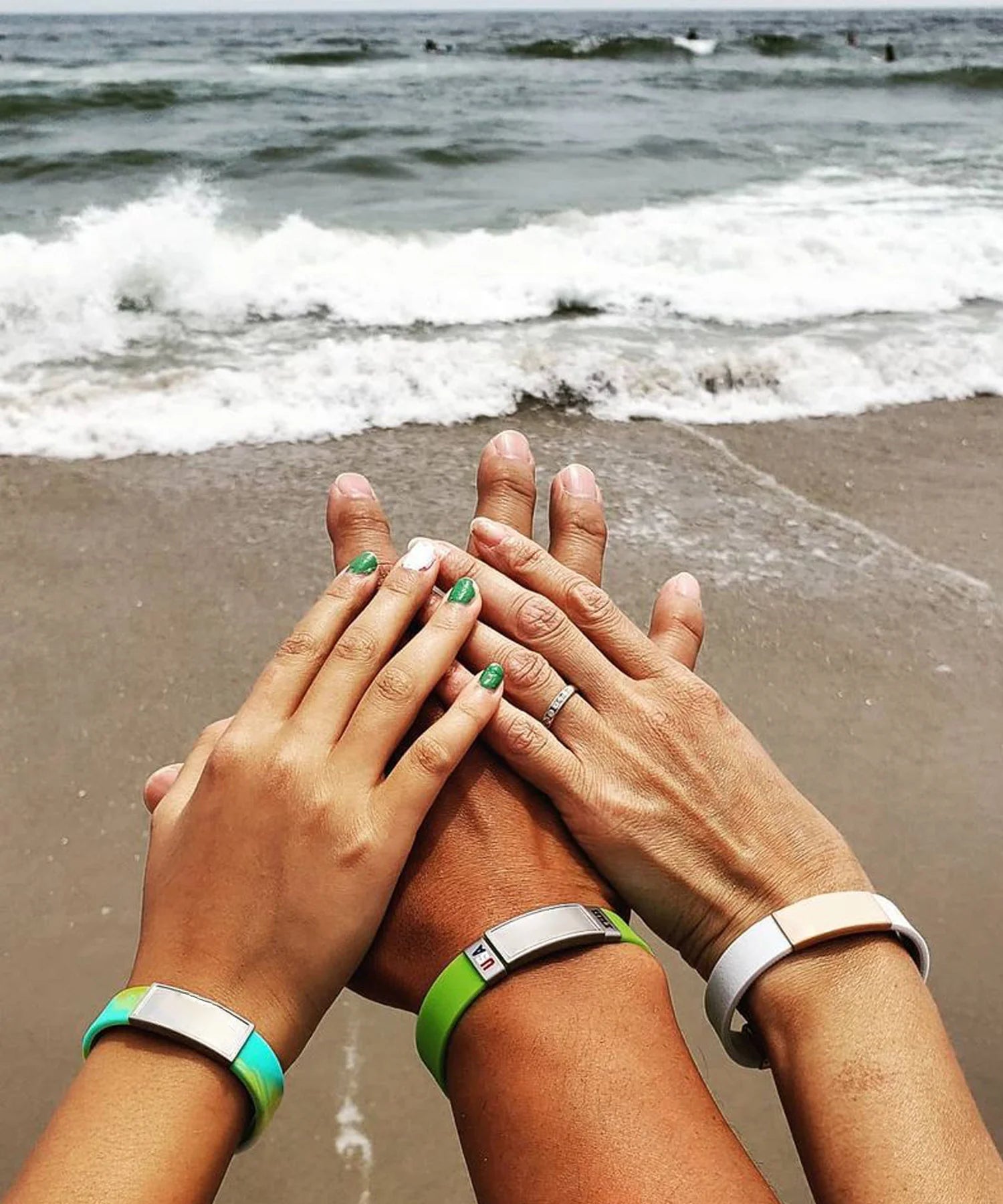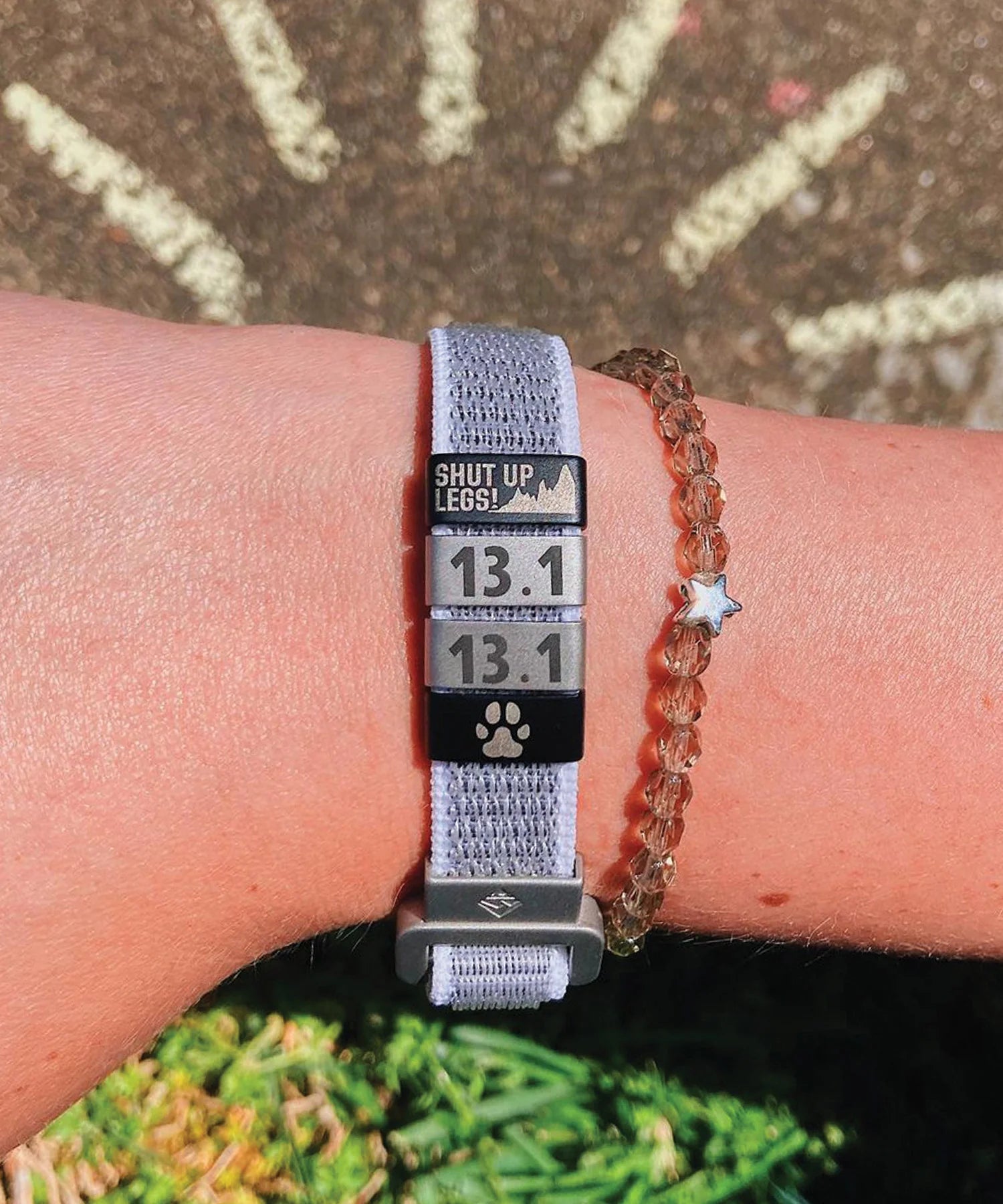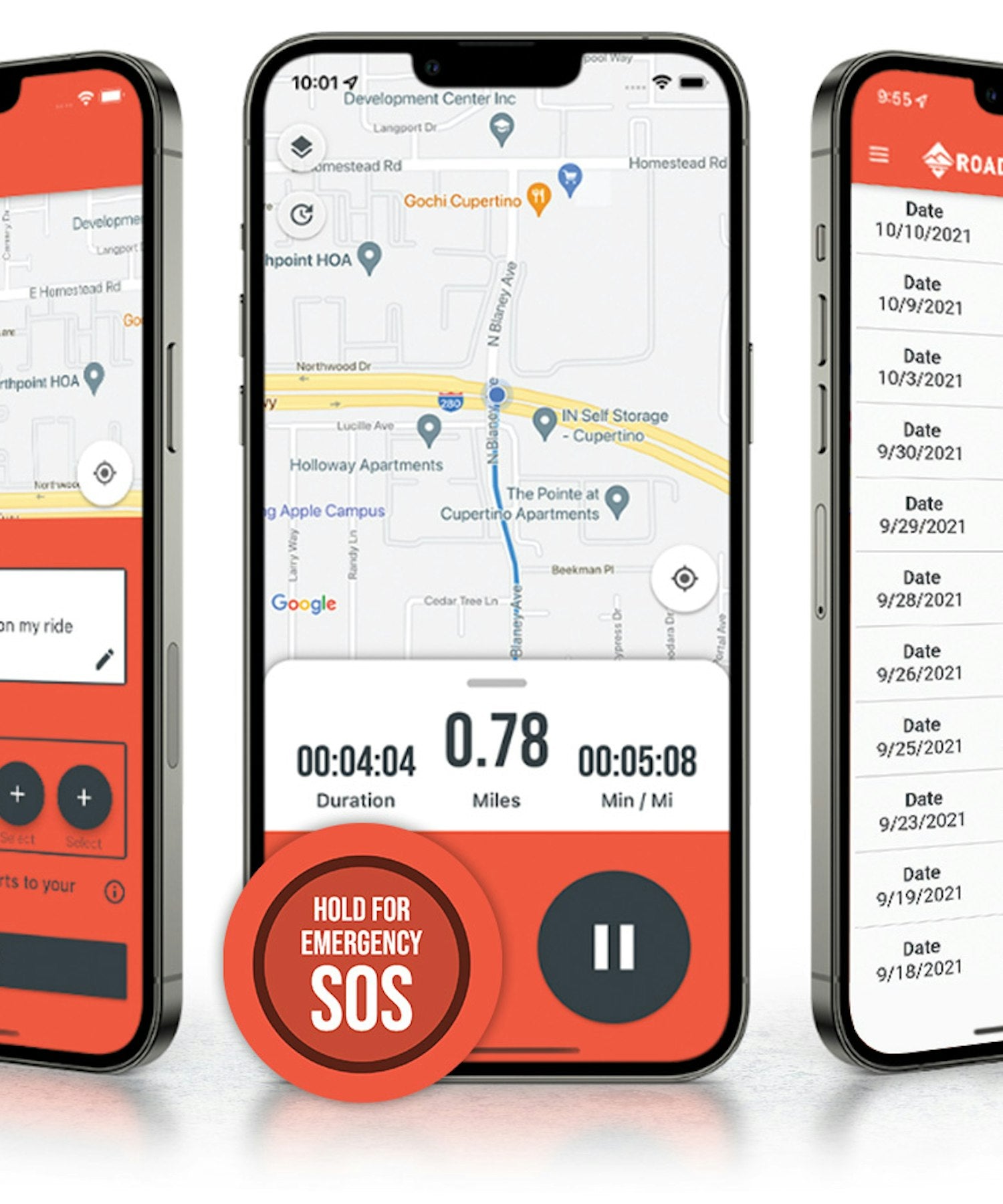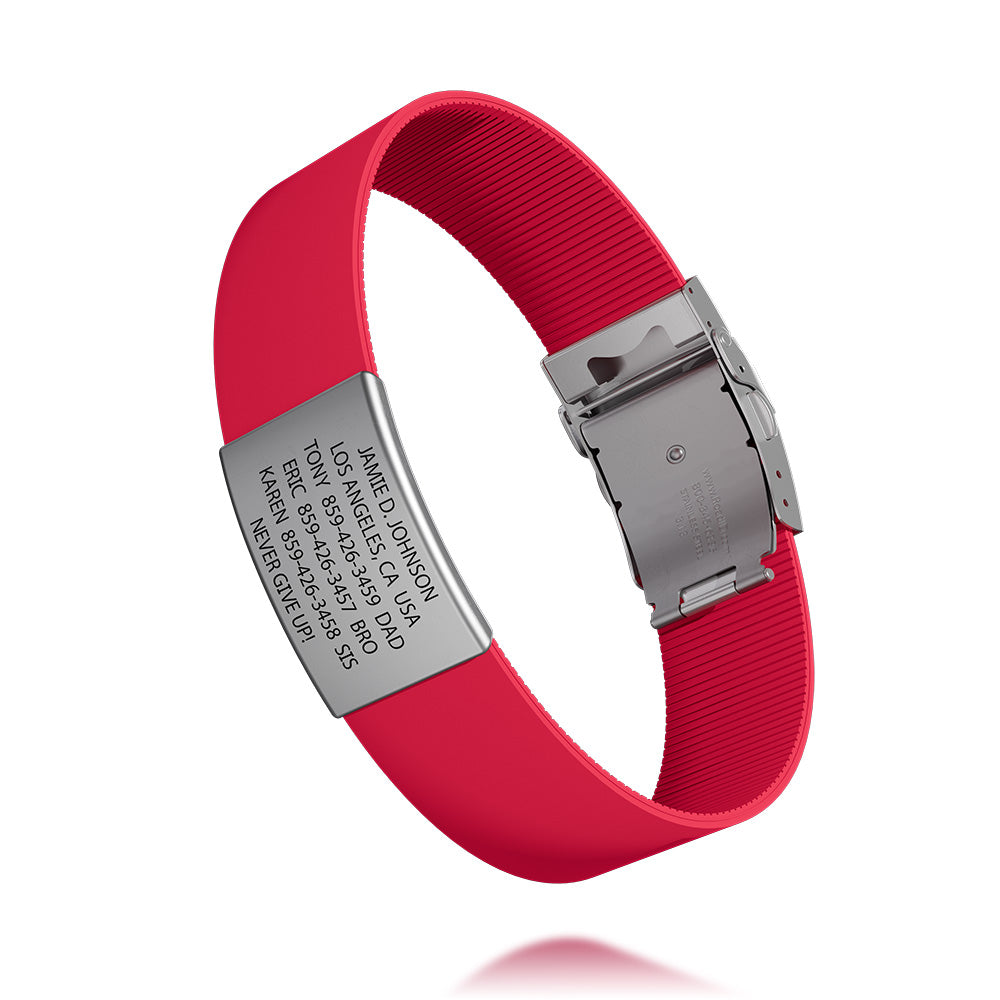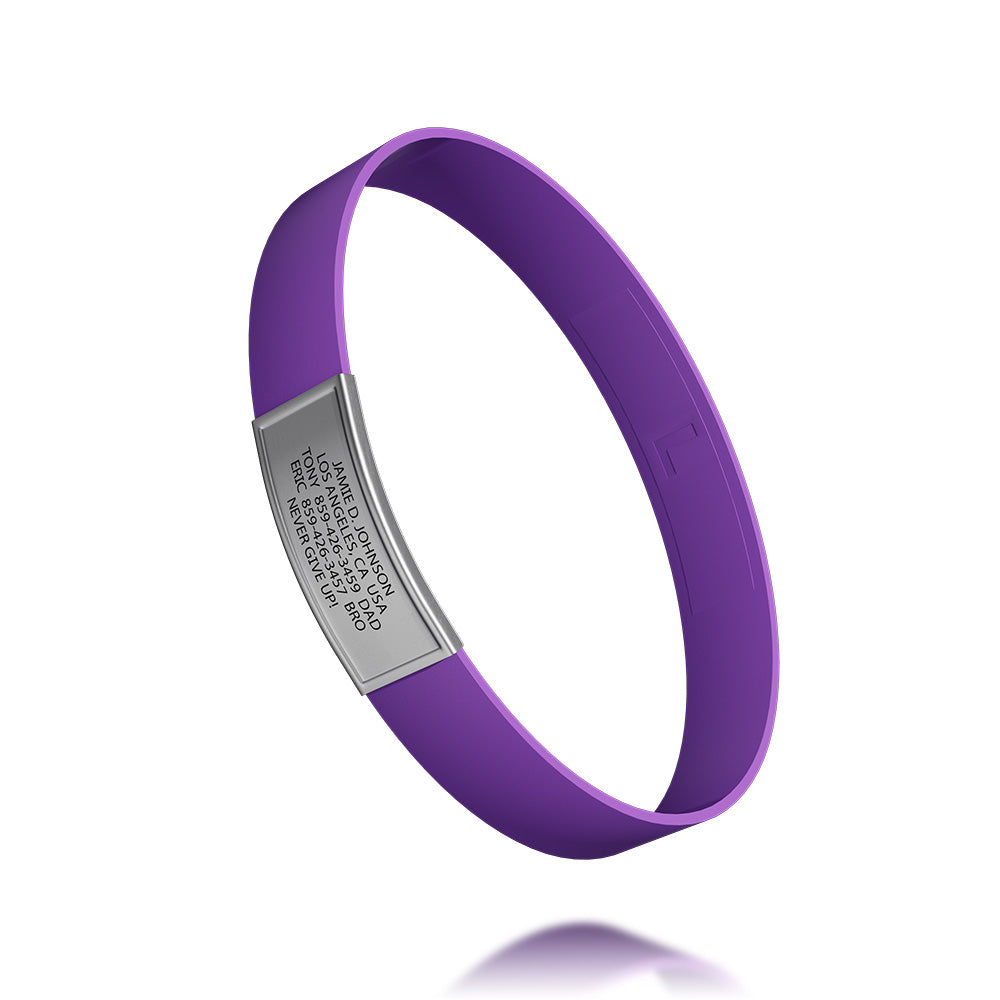
The purpose of a medical alert bracelet is to supply emergency health professionals with information about a person’s medical conditions or other bits of knowledge that can be relevant to providing care to someone who is in some way incapacitated.
Given how important this kind of an item is, it is essential to know what information goes on a medical alert bracelet so as to help emergency responders as much as possible.
Therefore, today, we will be covering that information in detail, as well as providing some information on who may require a medical alert bracelet and some of the benefits of wearing one (beyond the obvious).
With that said, let’s get started.
Who Needs a Medical Alert Bracelet?
Medical ID bracelets are designed to alert emergency medical technicians with information about a person’s medical conditions, allergies or medications that they might require.

The goal of such an item is to ensure that a person receives the best treatment possible and is not given something that could cause an adverse reaction. It is often said that medical alert bracelets speak for a person when they are incapable of speaking for themselves.
Therefore, it is essential for individuals who have an illness or allergy to wear a medical alert bracelet. Some specific conditions a person might wear a medical alert bracelet for include:
- Various heart conditions
- Diabetes
- Dementia
- Severe food or medication allergies
- Epilepsy
- Asthma, Emphysema or COPD
- Medical implants such as a pacemaker
While these are some conditions for which a person might wear a medical alert bracelet, there is much more information that should be provided.

What Information Goes on a Medical Alert Bracelet?
When someone goes to purchase diabetic jewelry or any other type of medical alert bracelet, they will quickly find that there are a number of fields which should be included. However, the space available is rather limited. Therefore, it is important to prioritize certain details over other bits of info.
To determine exactly what information goes on a medical alert bracelet that you will be wearing, it is advisable to consult with your healthcare provider.
That said, some important fields of information that you will likely want have engraved include:
Your Name
One of the most important pieces of information for emergency medical technicians to have is your name. If you are unconscious, you will not be capable of giving this info. However, if EMTs have your name, the hospital will potentially be able to pull your medical history, which might impact their course of treatment.
When getting your name engraved on a medical alert bracelet, it is necessary to list it as it would appear on your medical records (full first name, middle initial, full last name). Do not use any nicknames or shortened versions of your name. If your name is too long to fit, then simply use the first initial of your first and middle names and your full last name.
Your Birthday
The next key piece of information is your birthday. The reason for this is that, if someone else has the same name as you, then it can potentially be confusing to the hospital staff and could impact your treatment.
Granted, this is less likely to happen if you include the middle initial of your name but it is still better to err on the side of caution when dealing with emergency situations.
If you choose to have your birthday included on your medical alert bracelet, it is best to save space by having it engraved in numerical format. Additionally, for privacy reasons, it is best to have this information inscribed on the back of your bracelet.
Your Medical Conditions
The next critical piece of info is to list any medical conditions that could impact the treatment provided by EMTs, doctors and the like. This could include bleeding disorders, epilepsy, diabetes and a slew of other conditions.
However, since medical alert bracelets have a limited amount of space to work with, it is wise to use a medically-recognized abbreviation when possible.
As it stands, there are a panoply of common abbreviations for medical alert bracelets, including but not limited to:
- Alzheimer's disease: ALZ
- Automatic implantable cardiac defibrillator: AICD
- Autism Spectrum Disorder: ASD
- Congestive heart failure: CHD
- Chronic obstructive pulmonary disease: COPD
- Insulin-dependent diabetes mellitus: IDDM
- High blood pressure: HBP
- Post-traumatic stress disorder: PTSD
- Type 1 or type 2 diabetes: T1D/T2D
Therefore, if you were to purchase an Alzheimer’s ID bracelet for a loved one, you would want to include “ALZ” somewhere below the person’s full name.
However, if the medical condition you are wanting to engrave on the bracelet is not listed here, simply conduct an online search or ask your doctor for the proper medically-recognized abbreviation.

Your Allergies
When it comes to what information goes on a medical alert bracelet, allergies can be just as important as medical conditions. As unfortunate as it is, medications are the biggest cause of fatal allergic reactions. Therefore, listing any allergies on your medical alert bracelet is vital to ensure that you receive the proper care.
When it comes to listing allergies on your medical alert bracelet, it is common to inscribe “NO” or “ALGY” prior to the food or medication. For instance, someone who is allergic to Penicillin would write “NO PCN” or “ALGY: PCN” on their bracelet.
If you are unsure of the proper abbreviation for your specific allergy, it is best to consult with your doctor.
Medications You Take
Naturally, you will also want to include any medications that you have been prescribed and take on a regular basis. The reason for this is that supplying medical professionals with information on the medications you are taking could prevent a potentially adverse drug interaction when undergoing care.
However, do keep in mind that it is not necessary to list any medications that you are only taking temporarily (such as antibiotics). Instead, you will only want to list long-term medications like hormone or psychiatric drugs, corticosteroids and the like.
Supplies on Your Person
If you regularly carry any supplies on your person that could be helpful in an emergency situation, this too should be listed on your medical alert bracelet.
For instance, if you have an allergy that demands you carry an EpiPen to prevent you from going into anaphylactic shock, then include this information. The reason for this is that this info can not only be helpful to medical professionals, but good Samaritans as well.
Emergency Contact Information
If you end up in a situation that lands you in the hospital, you will want your loved ones to be notified. Therefore, it is wise to include an “in case of emergency” phone number on your medical alert bracelet. This is especially important if the bracelet is for a loved one with dementia or Alzheimer’s or for a minor, such as a child.
To do this, you will want to engrave “ICE” (which stands for “in case of emergency”) followed by the phone number you want the hospital to call. The person listed should be someone who has the ability to make medical decisions for you in the event that you cannot. This could be a parent, spouse or someone else with the legal authority necessary. This type of person is known as a health care proxy.
However, if you do not have a health care proxy, it is fine to simply list the phone number of the person you wish to be contacted in such a scenario.
The Star of Life
While some folks might consider simply purchasing a plain bracelet that has the aforementioned information engraved onto it, it is necessary to procure one that has the Star of Life symbol.

For those who are unfamiliar, the Star of Life is a universally recognizable emblem used to represent emergency medical services. It is a six-pointed star with a snake and staff at its center. This symbol will alert people to the fact that your bracelet is medically related and should be checked for information.
Now that you know what information goes on a medical alert bracelet, let’s take a quick look at some of the benefits of wearing a medical ID bracelet.
Medical Alert Bracelet Benefits
The plain fact of the matter is that a medical alert bracelet is a small investment for the potential life-saving benefits being received.
That said, there are a handful of incredible benefits to wearing a medical ID bracelet or other type of jewelry, including:

Quality of Care and Greater Context
If you are wearing a medical alert bracelet, you are likely to receive care faster when EMTs arrive at the scene.
The information supplied will also help to guide them toward safer, more effective treatment options for your particular circumstances.
For instance, if you have a seizure and fall unconscious, you could wake up in the emergency room as seizures can potentially have life-threatening underlying causes. However, if you have epilepsy, you might experience seizures somewhat regularly and do not need to go to the hospital for them.
Wearing a medical alert bracelet will inform first responders of this situation and they will be more likely to simply wait for the seizure to end and consult you on how you would like to move forward.
On the other side of that coin, if you have a brain tumor, a seizure could be life-threatening. If EMTs are aware of this condition, thanks to a medical alert bracelet, they can get you to the nearest hospital and provide critical information to the doctors who will be treating you.

Bystander Response
While the utility of medical alert bracelets is typically talked about in the context of EMTs on the scene, the reality is that medical jewelry can also be extremely useful to bystanders who find you in a distressed state.
For instance, if a person finds an individual suffering from Alzheimer’s lost and confused, the information found on their bracelet can be instrumental in safely getting them back to where they belong.
Similarly, if a person with diabetes goes into insulin shock in public, a medical alert bracelet could prompt a good Samaritan to get them a piece of candy or some orange juice.
The point here is that medical jewelry can be useful to medical professionals and laypeople alike.
What About High-Tech Options?
In the digital age, high-tech medical alert bracelets have been developed as a way of dealing with the limited space allowed by more traditional options. Through these types of devices, medical personnel can scan a bracelet’s QR code to access the person’s information.
While this sounds great in theory, it is important to consider that such technology is not always reliable. Firstly, one must consider what would happen if the EMT’s phone was dead or cell service in the area was down. Even if this isn’t the case, this kind of technology places an additional step between a first responder and critical information about your health and medical history.
For these reasons, the high-tech options are simply not advisable.
Sizing a Medical Alert Bracelet
Many of the more standard medical alert bracelets that come with chain links and lobster claw clasps will require you to order a specific size. To do this, you will need to measure your wrist.
A simple way to do this is to use measuring tape or a piece of string and a ruler. Start by wrapping the string around your wrist until the two ends meet. Then, lay it next to a ruler to determine the length.
However, you could also forgo this process entirely and instead go with the silicone, one-size-fits-all options offered by ROAD iD.
Putting the Right Info on Your Medical Alert Bracelet
Now that you understand what information goes on a medical alert bracelet and why those specific details are so important, you are ready to get started designing your very own medical alert bracelet.
Check out all the options ROAD iD has to offer, choose your style and we will get it out to you the same day your order is placed!
Image Credits
nexusby/Shutterstock.com
Dmytro Zinkevych/Shutterstock.com
michaeljung/Shutterstock.com
New Africa/Shutterstock.com
Sergey Saulyak/Shutterstock.com



